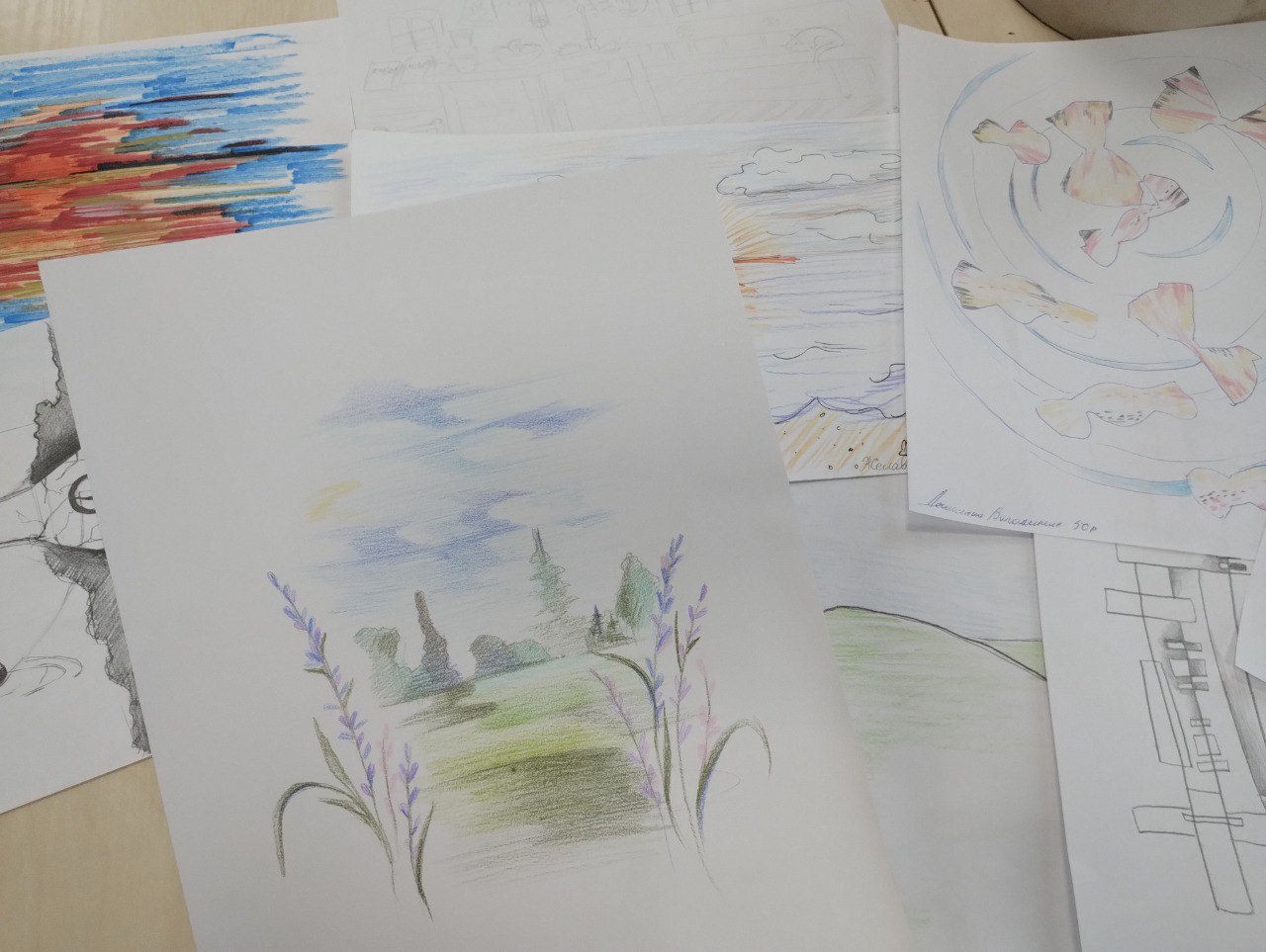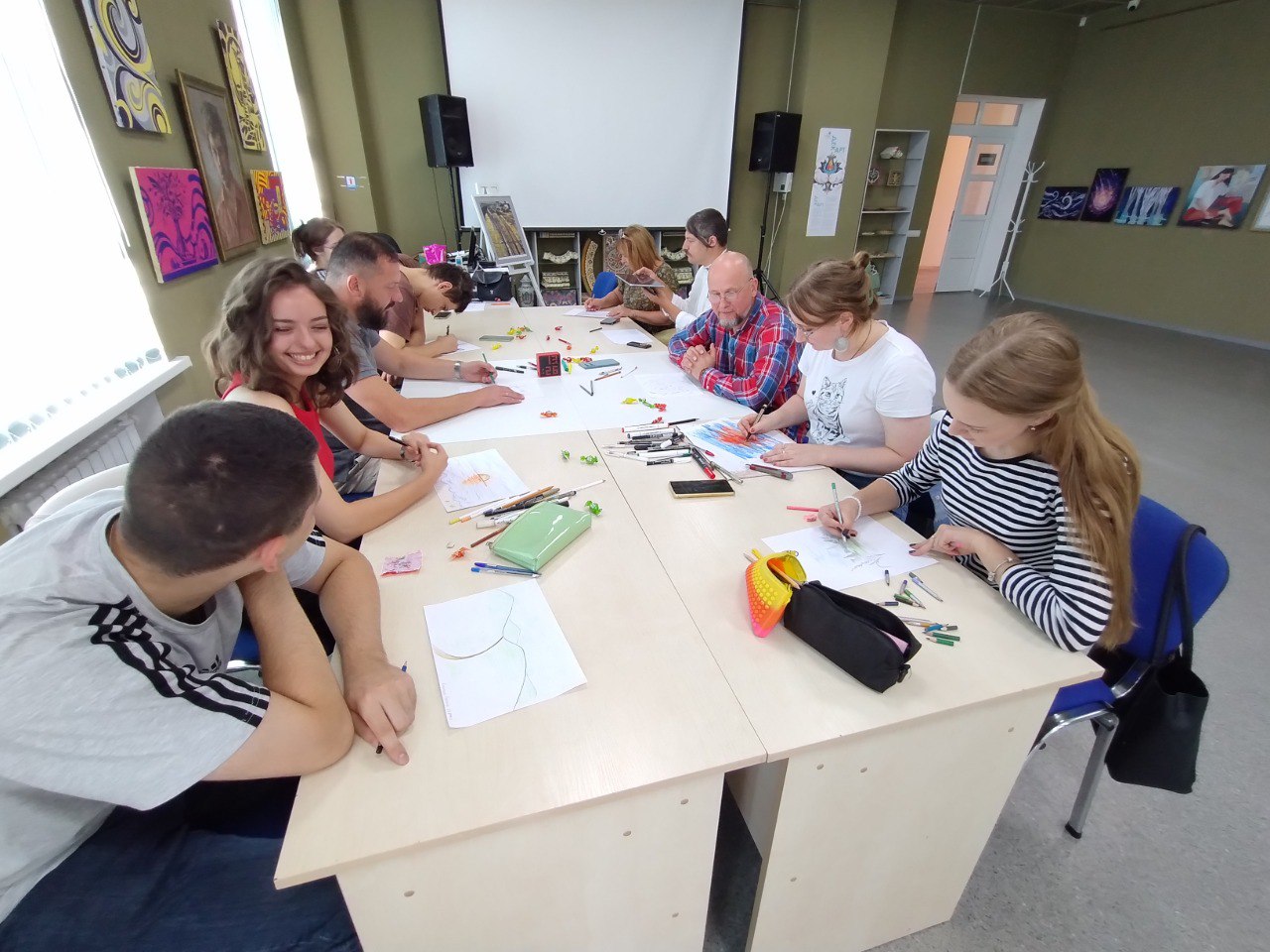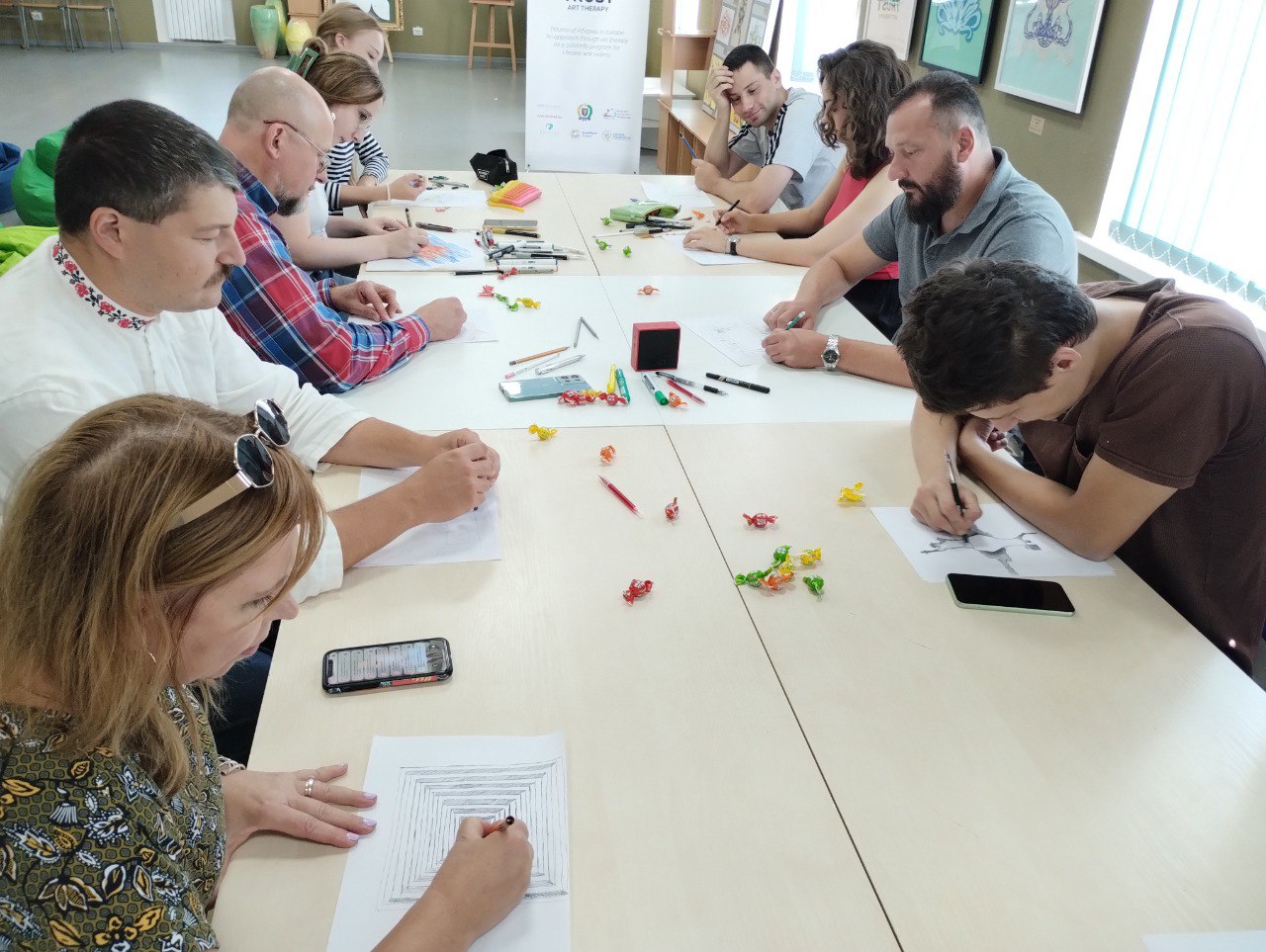In today's world, full of challenges and unpredictable changes, the search for inner refuge and a sense of security takes on special significance. For many who have experienced traumatic events and lost their usual support, art becomes a powerful tool for recovery, self-expression, and finding new meanings. This was precisely the goal of the “My Safe Space” art therapy meeting, organised on August 28th, 2025, by the National University “Yuri Kondratyuk Poltava Polytechnic” within the framework of the international Erasmus+ KA220-ADU “TRUST” project. This event aimed to restore a sense of security, build internal resources, and find stability for participants whose lives had been deprived of their usual safe space.
Art therapy, as a method of psychological assistance, actively uses the creative process to address emotions, traumas, and internal conflicts. It allows one to go beyond verbal expression, offering a symbolic space for what often remains unsaid. In the case of the “My Safe Space” practice, the primary focus was on psychological mechanisms that help restore a lost sense of security. Creating a visual image of one's own safe place is a powerful technique that helps reduce anxiety, strengthen inner support, and develop emotional resilience. This is not just drawing, but a deep immersion into one's own inner world, where every colour, line, or form becomes a reflection of an individual's path to healing and restoring harmony.
The “My Safe Space” art therapy session was based on the concept that every person needs a sacred, protected place where they can feel calm, confident, and free from external threats. In the context of trauma and forced displacement, when a physical safe space has been lost, creating its visual image becomes a powerful psychological tool. This process allows for the symbolic recreation of the lost sense of security experienced in a controlled and supportive environment. Participants have the opportunity to find an inner resource that is immutable, despite external circumstances, and realise their own inner strength. It also helps to visualise what gives a sense of calm and protection, and to activate these feelings in everyday life, forming effective coping strategies. A key aspect is overcoming the feeling of helplessness and powerlessness that often accompanies trauma, replacing them with a sense of control and the ability to influence one's emotional state.
The practical part of the meeting began with each participant receiving a separate sheet of paper and a wide selection of graphic materials. The facilitators of the event invited participants to close their eyes and imagine a place where they feel absolutely protected, calm, and safe. This could be a place from the past, such as their childhood home or grandmother's garden, an imaginary place, such as a magical forest or an island, or an abstract space filled with symbols of calm and protection. Participants had no restrictions on the choice of place or materials, allowing them to express their inner world as freely as possible. This stage was crucial for setting the mood for creative work and immersing oneself in one's own profound experiences.
The visual representations created by the participants had multifaceted therapeutic value. They helped create a mental “island” of stability – a kind of visual “anchor” to which one can return in thought during challenging moments. This provides a sense of control over one's internal state, even when external circumstances remain unstable. Through the choice of colours, shapes, and symbols, participants could unconsciously express their needs and hidden emotions; for example, the use of warm colours often symbolised the need for comfort, and clear, strong lines – the need for protection. In the process of creating a “safe space”, participants found and visualised their internal resources – calm, strength, love, hope, realising that the sources of support are within themselves. For those who had lost their physical home, this practice allowed them to symbolically “rebuild” it, but in an inner world where it could not be destroyed. Although the work was individual, discussing their works in a group created a space for mutual understanding and support, as many found common elements in their “safe spaces”, which strengthened the sense of community and reduced feelings of isolation.
The “My Safe Space” art therapy meeting proved to be highly effective for psychological support. It allowed participants to symbolically restore a sense of security and stability that had been lost as a result of the war, and activate internal resources to combat anxiety and stress. Participants were able to visually express their needs for protection and peace, and overcome feelings of isolation by finding common elements in the experiences of others. In addition, the creation of a personal artefact-amulet became a powerful reminder of their inner strength and ability to recover.



Such art therapy events are powerful tools for emotional recovery, developing personal resilience, and finding new meanings in life. The moderators of the event were Olena Ostrohliad, Senior Lecturer at the Department of Fine Arts, and Maryna Teslenko, Associate Professor at the Department of Psychology and Pedagogy of Poltava Polytechnic.
The event was held as part of the international, large-scale EU-funded Erasmus+ KA220-ADU project “TRUST” – Trauma of refugees in Europe: An approach through art therapy as a solidarity program for Ukraine war victims (Grant No. 2024-BE01-KA220-ADU-000257527).
The project title is decoded as follows:
TRUST
T – Trauma
R – Refugees
U – Ukraine
S – Solidarity
T – Therapy
The project is co-funded by the EU and led by the Centre Neuro Psychiatrique St-Martin from Belgium, in partnership with the National University “Yuri Kondratyuk Poltava Polytechnic” (Ukraine), Greek Carers Network EPIONI (Greece), Fondazione Don Luigi Di Liegro (Italy), Lekama Foundation (Luxembourg), EuroPlural Project (Portugal).
As a reminder, faculty members of Poltava Polytechnic are eligible to participate in academic mobility and internship programs. Students can study abroad through Erasmus+ credit academic mobility grant programs for a semester or a full academic year at leading universities in Austria, Greenland, Denmark, Estonia, Finland, France, Germany, Greece, Ireland, Italy, Latvia, Lithuania, Luxembourg, the Netherlands, Norway, Poland, Portugal, Romania, Slovakia, Spain, Sweden, and the Czech Republic.
For more detailed information on current internship, teaching, and academic mobility programs abroad, please get in touch with the International Relations Office (office 213-C, interoffice@nupp.edu.ua) or the coordinator of international activities at the National University “Yuri Kondratyuk Poltava Polytechnic” – Anna Pavelieva, Ph.D. in Philology, Associate Professor of the Department of Germanic Philology and Translation (email: kunsite.zi@gmail.com, phone: +38-(095)-91-08-192).
Media Centre of
National University “Yuri Kondratyuk Poltava Polytechnic”



